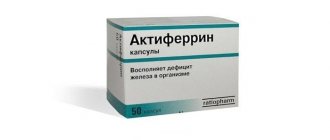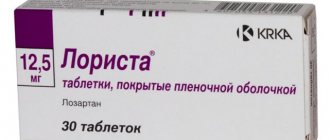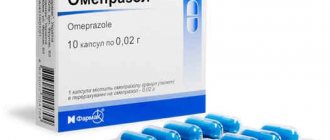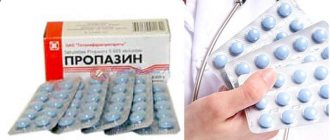Pramipexole
The following side effects have been reported with use: abnormal dreams, amnesia, behavioral disorders (symptoms of impulsive and compulsive actions) - such as compulsive overeating (hyperphagia), obsessive shopping (pathological shopping), pathological gambling, hypersexuality; libido disorders, anxiety, paranoia, hallucinations, delirium, heart failure, confusion, constipation, dizziness, tachycardia, dyskinesia, asthenia, headache, dyspnea, weakness, hyperkinesia, hiccups, decreased blood pressure, insomnia, psychosis, extrapyramidal syndrome, nausea , peripheral edema; pneumonia; bursitis, myasthenia gravis, muscle twitching, itching, rash, dry mouth, impaired secretion of antidiuretic hormone, respiratory and urinary tract infections, frequent urination, drowsiness, sudden falling asleep, fainting; visual impairment including diplopia, decreased visual acuity and clarity; vomiting, change in body weight, loss of appetite.
Typically, side effects appear at the beginning of the course of therapy and disappear with long-term use of the drug. The frequency and manifestations of side effects are dose-dependent and reversible.
For systemic organ classes according to the frequency of side effects, the following classification is used (WHO): very often >1/10, often from >1/100 to 1/1000 to 1/10000 to
Parkinson's disease, most common side effects
Nervous system: very often - dizziness, dyskinesia, drowsiness; infrequently - amnesia, hyperkinesia, sudden falling asleep, fainting.
Endocrine system: uncommon - impaired secretion of antidiuretic hormone.
Cardiovascular system: often - decreased blood pressure; infrequently - heart failure.
Gastrointestinal tract: very often - nausea; often - constipation, vomiting.
Mental disorders: often - abnormal dreams, amnesia, behavioral disturbances (symptoms of impulsive and compulsive actions), confusion, hallucinations, insomnia; infrequently - compulsive overeating, obsessive shopping (pathological shopping), pathological gambling, delirium, hypersexuality; libido disturbance, paranoia, anxiety.
Respiratory system: infrequently - dyspnea, hiccups.
Visual organs: often - visual impairment, including diplopia, decreased visual acuity and clarity of perception.
Skin and subcutaneous tissue: uncommon - itching, rash.
Infections and infestations: uncommon - Pneumonia and other infections of the upper and lower respiratory tract.
General disorders: often - fatigue, peripheral edema.
Disturbances identified during special studies: often - loss of appetite, loss of body weight; infrequently - weight gain.
Idiopathic restless legs syndrome, most common side effects
In patients with restless legs syndrome taking the drug, the following side effects are most often (≥5%) recorded: nausea, headache, dizziness, fatigue. Nausea and fatigue were more often recorded in female patients taking the drug (20.8% and 10.5%, respectively) compared to men (6.7% and 7.3%, respectively).
Nervous system: often - dizziness, headache, drowsiness, fatigue; uncommon - amnesia, dyskinesia, hyperkinesia, sudden falling asleep, fainting.
Endocrine system: uncommon - impaired secretion of antidiuretic hormone.
Cardiovascular system: uncommon - decreased blood pressure, heart failure.
Mental disorders: often - abnormal dreams, insomnia; uncommon - behavioral disorders (symptoms of impulsive and compulsive actions), such as compulsive overeating, compulsive shopping, delusions, hyperphagia, hypersexuality, confusion, hallucinations, libido disorders, paranoia, anxiety, pathological gambling, restlessness.
Infections and infestations: uncommon - pneumonia and other infections of the upper and lower respiratory tract.
Visual organs: uncommon - visual impairment, including diplopia, decreased visual acuity and clarity of perception.
Respiratory system: infrequently - dyspnea, hiccups.
Gastrointestinal tract: very often - nausea; often - constipation, vomiting.
Skin and subcutaneous tissue: uncommon - itching, rash and other symptoms of hypersensitivity.
General disorders: often - fatigue; infrequently - peripheral edema.
Disturbances identified during special studies: infrequently - loss of body weight, loss of appetite, weight gain.
Suspected symptoms of overdose characteristic of the pharmacodynamic profile of dopamine receptor agonists: nausea, vomiting, hyperkinesia, hallucinations, agitation, decreased blood pressure.
There is no specific antidote. In case of overdose, symptomatic therapy is carried out: gastric lavage, intake of activated charcoal and ECG monitoring are recommended. Intravenous administration of 0.9% sodium chloride solution is also necessary. If signs of central nervous system stimulation appear, antipsychotics may be recommended. The effectiveness of hemodialysis has not been established.
Compound
Pramipexole is available in the form of tablets for oral administration. The capsules are white, oblong in shape, have a line on one side and an engraving on the other. The tablets are placed in blisters (three pieces per package) of seven and ten tablets.
The drug contains the following components:
- pramipexole dihydrochloride monohydrate;
- magnesium stearate;
- pregelatinized starch;
- colloidal silicon dioxide;
- mannitol;
- povidone.
The drug contains 0.25, 0.5, 1, 1.5 mg of pramipexole (active ingredient).
Contraindications
According to the instructions, Pramipexole has a number of restrictions on its use:
- Age up to eighteen years.
- Lactation.
- Individual intolerance to substances.
- Kidney diseases.
- Arterial hypotension (a characteristic symptom that reflects the peculiar degrees of decrease in blood pressure).
- Psychotic disorders (disorder of voluntary adaptation of human mental activity).
- Vision problems.
- Diseases of the heart and blood vessels.
- Pregnancy.
What properties does the drug have?
According to the instructions, Pramipexole is a dopamine ligand. Characterized by increased specificity and protection. Binds to D2-dopamine receptors, the most pronounced affinity is for D3-dopamine receptors.
The use of the drug helps eliminate the lack of movement in Parkinson's disease, which is achieved through the activation of dopamine receptors in the striatum (anatomical structure of the telencephalon, related to the basal ganglia of the cerebral hemispheres).
The main mechanism of action of Pramipexole:
- Inhibition of the formation, release and metabolism of dopamine.
- Provide protection to dopaminergic neurons from deformation that occurs in response to methamphetamine neurotoxicity or ischemia.
- Decreased prolactin secretion.
Absorption of the active substance is sharp and occurs in full. Eating slows down the rate of absorption. Bioavailability is more than 90 percent, the maximum concentration of the active substance in the blood is achieved in three hours.
Reviews, price
According to reviews, Pramipexole is an effective remedy that is used both in monotherapy and in complex treatment.
Doctors note that with parkinsonism, the rate of its development slows down. In addition, treatment is prescribed to correct unexpressed depressive symptoms.
Among the disadvantages of Pramipexole, side effects are noted, which manifest themselves in the form of dizziness, anxiety, bloating, dry mouth, and diarrhea.
The approximate price of Pramipexole varies from 200 to 2000 rubles, depending on the markup of the pharmacy and the dosage of the drug.
"Pronoran"
Refers to antiparkinsonian drugs that stimulate the dopaminergic system of the structures of the central nervous system. Pronoran is widely used in neurology, including for the treatment of Parkinson's disease. The drug is produced in the form of tablets for oral administration, capsules are coated.
In addition, Pronoran is used in ophthalmology as an additional treatment for various eye and retinal lesions that are associated with tissue nutrition problems.
In the course of research, it was recorded that in certain patients, when using the drug, sexual attraction to the opposite sex increased, and also a tendency to gambling arose. All adverse reactions are reversible and disappear after stopping the medication. The cost of the medicine is 500 rubles.
"Rexip Modutab"
It is considered an original remedy for the treatment of parkinsonism at any stage of the disease together with Levodopa. The medicine is manufactured in the UK and is a dopamine receptor agonist. Today it is the only dopamine agonist used once a day in Russia.
"Rexip Modutab" is produced in the form of film-coated tablets; capsules have a prolonged effect. The drug is available in the following dosages - 2, 4 and 8 milligrams, in a package - twenty-eight tablets, slightly less than Pramipexole. The price of the medicine varies from 1300 to 4000 rubles.
"Mipexol"
Antiparkinsonian drug, dopamine receptor ligand. The mechanism of action is associated with the ability of the active substance to activate dopamine receptors in the striatum. The drug is available in the form of tablets for oral administration. The active ingredient is pramipexole. After ingestion, the main component is quickly absorbed from the gastrointestinal tract. The drug reaches its maximum concentration in the blood after two hours. The shelf life is three years; Mipexol is available only with a prescription. The cost of the medicine is 900 rubles.
Interaction with other drugs
When used together with Levodopa, it is recommended to reduce the dosage, and the dosage of other antiparkinsonian medications when increasing the dose of Pramipexole must be maintained at a stable level.
When taken simultaneously with antipsychotics, an antagonistic effect may occur, so it is recommended to avoid such a combination.
Due to possible cumulative effects, caution should be exercised when taking alcohol with Pramipexole.
Dosage and method of administration
Pramipexole is taken orally with water. The daily dose of the drug must be divided into three equal parts. In the first seven days of therapy, a single dosage should be 0.125 milligrams.
To achieve a better therapeutic effect, the dosage of Pramipexole is increased to 0.25 milligrams (the second week of using the medicine) and 0.5 milligrams (from the fifteenth to the twenty-first day of treatment).
Subsequently, if necessary, once every seven days the daily dosage is increased by 0.75 milligrams. The maximum daily dose should be no more than 4.5 milligrams.
According to the instructions for Pramipexole, it is important to note that when using a dosage of more than 1.5 milligrams per day, drowsiness increases. For maintenance therapy, the dose ranges from 0.375 to 4.5 milligrams per day.
Pramipexole is effective in both the early and late phases of Parkinson's disease, starting with a daily dosage of one and a half milligrams.
Changing the dosage of the drug depends on the patient's response to therapy and the occurrence of side effects. It is not excluded that in some patients a dose of more than one and a half milligrams per day can have an additional therapeutic effect, especially at a severe stage of the disease.
The drug is discontinued gradually - 0.75 milligrams per day until complete cessation, since abrupt discontinuation of the course of therapy can cause the appearance of neuroleptic malignant syndrome (a relatively rare but life-threatening disorder associated with the use of psychotropic drugs, mainly antipsychotics).
The dosage of Pramipexole during initial therapy in patients with renal failure is determined by an indicator that characterizes the rate of blood passage through the kidneys (creatinine clearance):
- From twenty to fifty milliliters per minute - 0.125 milligrams twice a day.
- If renal function deteriorates during maintenance therapy, then the daily dosage of Pramipexole is reduced by the same percentage by which creatinine clearance decreases.
- If the rate of blood movement through the kidneys is from thirty to fifty milliliters per minute, the daily dose can be divided into two doses; if the creatinine clearance is less than twenty milliliters per minute, the drug must be taken once a day.
When carrying out complex treatment, as the dosage of Pramipexole increases, the dosage of Levodopa must be adjusted. This helps to avoid increased dopamine activation.










